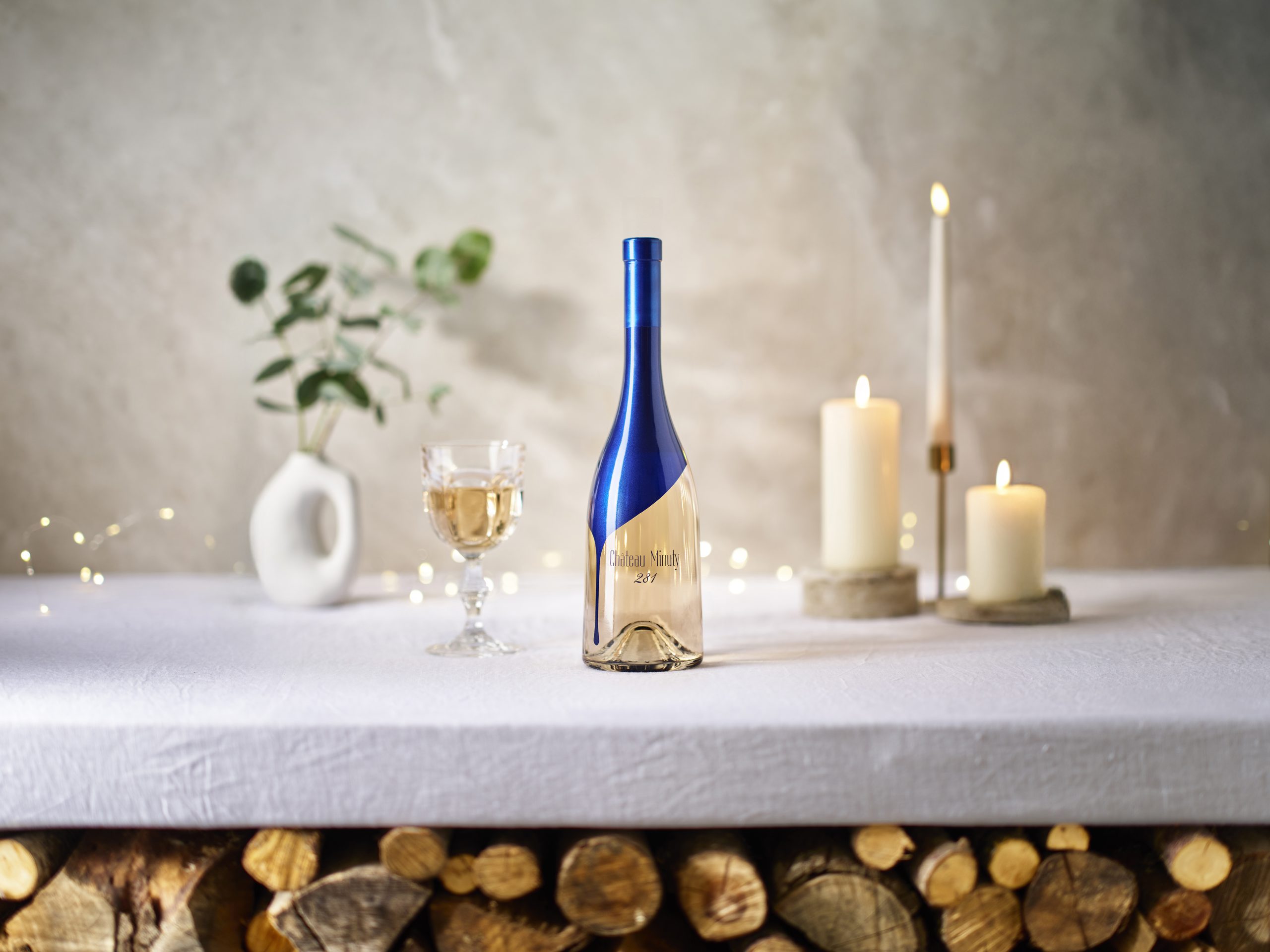Sicily: nine wine trends to watch out for
This month’s Sicilia En Primeur showcased the diversity and quality of the Italian region’s viticultural output, and also gave some indication of what the future may hold for its wine sector.

Giuseppe Tomasi di Lampedusa wrote in The Leopard of Sicily’s “traditional impermeability to anything new”, but the Mediterranean island’s wine sector is far from static…
Indigenous varieties in, international ones out?
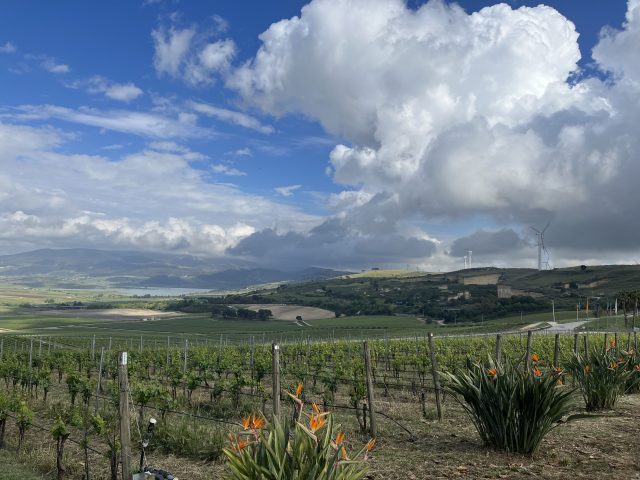
Given the length of the list of foreign nations that have left their mark on Sicily, it’s unsurprising that international grape varieties have found a home there. Producers of all sizes are producing exciting expressions of everything from Chardonnay to Syrah.
But, it seems that some are boomeranging back towards making wine from grapes native to Sicily.
Andrea Pizzo of Feudo Arancio in Agrigento, shared: “Year by year, we prefer to remove some international varieties and introduce more indigenous varieties.” The winery’s focus has increasingly been on Nero d’Avola and Grillo.
Likewise, Cristo di Campobello owner Carmelo Bonetta revealed that after last year’s harvest, the company uprooted its Merlot in favour of Nero d’Avola.
Sicilia DOC data on the hectarage devoted to particular varieties also demonstrates this phenomenon. Between 2017 and 2019, the area cultivated for Nero d’Avola dropped from approximately 15,500 hectares by almost 1,000ha, only to bounce back again by 2021.
The same data set shows growth for a number of indigenous black and white grape varieties, but notable decreases in the hectarage of Chardonnay, Syrah, Merlot and Cabernet Sauvignon.
A key driving force of this trend has been global warming. In August 2021, Siracusa reported the hottest temperature ever recorded in Europe – a scalding 48.8°C. Indigenous grapes, which have adapted to cope with scorching summers, could well present the best hope for viticulturists.
Of course, it doesn’t have to be one or the other. While the grapes may not be as resilient, international varieties have “international appeal”, as Pizzo put it. Feudo Arancio’s 2021 Dalila is a blend 80% Grillo (aged for a year in stainless steel) with 20% Viognier (aged for a year in oak) for precisely this reason.
Grillo growth
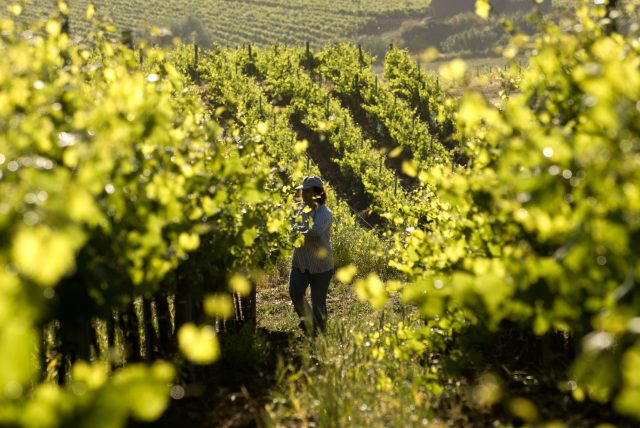
As far as indigenous Sicilian varieties to keep an eye out for in the future, hot climate-hardy Grillo in particular is on an upwards trajectory.
Between 2000 and 2022, the total area of Sicily being cultivated for this white grape more than quadrupled, increasing from 2,141ha to 8,579ha. By contrast, in the same time frame Nero d’Avola’s expansion has been somewhat more modest, increasing from 14,259ha in 2000 to 15,387ha in 2022. The most widely-planted variety is Catarratto/Lucido, with just shy of 30,000ha as of 2021.
From 2017 to 2021, the number of bottles of Sicilia DOC Grillo produced rocketed by a staggering 489%, exceeding 20 million.
Versatility, as overused as the term is when writing about grapes, is one of Grillo’s great attributes. The variety is widely utilised in the west of the island for still, sparkling, sweet and fortified expressions.
Among the biggest surprises to emerge was Tenuta Gorghi Tondi’s Grillodoro Vendemmia Tardiva, a sweet, nobly rotted Grillo from a 2ha vineyard next to the sea (providing the misty morning conditions necessary for Botrytis Cinerea to take hold). In years when it is possible to produce, 1,500-2,000 bottles are made. The particular vintage tasted, 2017, has 150g/l of residual sugar.
Sustained success
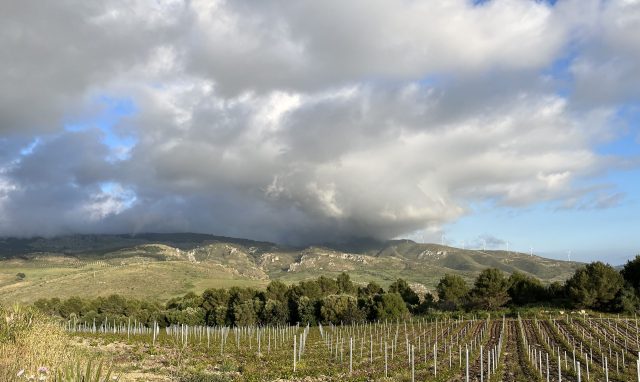
The growth of SOStain since its foundation in 2020 continues to be a success story. Now with 39 member companies and almost 33,000ha of associated vineyard area, the organisation is pushing for greater environmental and social sustainability within Sicily’s wine industry.
One SOStain initiative that is gaining significant traction involves the production of lightweight bottles, made of approximately 95% recycled glass, entirely within Sicily. Furthermore, SOStain is working with closure manufacturer Amorim to recover and recycle corks, repurposing them as “design objects”.
There are also exciting project in the organic and biodynamic sphere. Serra Ferdinandea, a collaboration between the Planeta and Oddo families, has had SOStain’s principles at its core from its inception.
110ha of the rugged, wind turbine-crested terrain of the Sciani Mountains has been devoted to ancient varieties of wheat, native bee species, nitrogen-fixing chickpeas, and, of course, wine grapes (Grillo, Nero d’Avola, Syrah and Sauvignon Blanc).
The project’s biodynamic consultant Adriano Zago explained: “We chose biodynamics because we really believe in biodiversity, and the quality of the food and wine…It’s a system – each piece helps the other.”
Big things have small beginnings, with the 17ha of vineyards soon to be expanded to 40ha.
Highs…
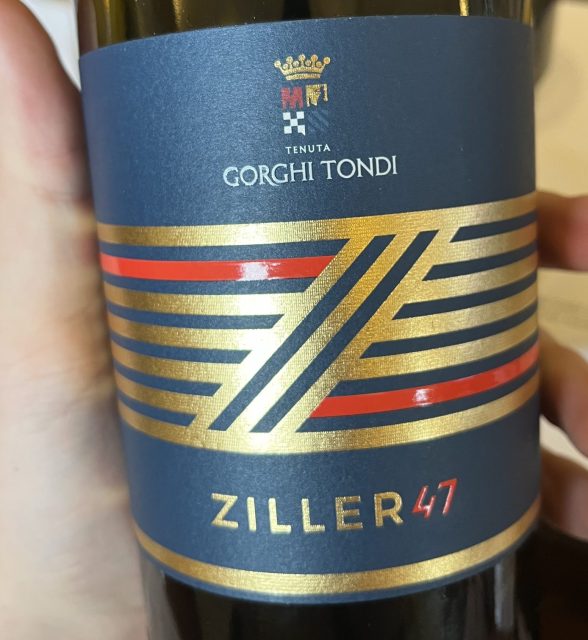
Switching focus from vineyards to what actually ends up in the bottle, in the western province of Trapani (where the town of Marsala is created) there is renewed interest in creating a traditional, high-alcohol wine that was the stylistic precursor to the fortified Marsala that we know today.
db discovered Florio’s new 15% ABV Alto Grado, Florio Vino, at a tasting in London last month. But Florio isn’t the only producer to make a wine of this style. Described as a “pre-British wine”, a reference to the role 18th century English visitors to Sicily played in the emergence of a fortified wine industry in Marsala, Tenuta Gorghi Tondi’s Ziller 47 clocks in at an impressive 16% ABV (though with its 14g/l of residual sugar, the potential alcohol is closer to 18%).
Partner Content
This highly-oxidative non-vintage blend of Grillo from the 2010, 2011 and 2012 vintages is, according to Gorghi Tondi social media & web manager Marilena Leta, “a style not recognised by bureaucracy”, but it offers a taste of something quintessentially Sicilian.
…and lows
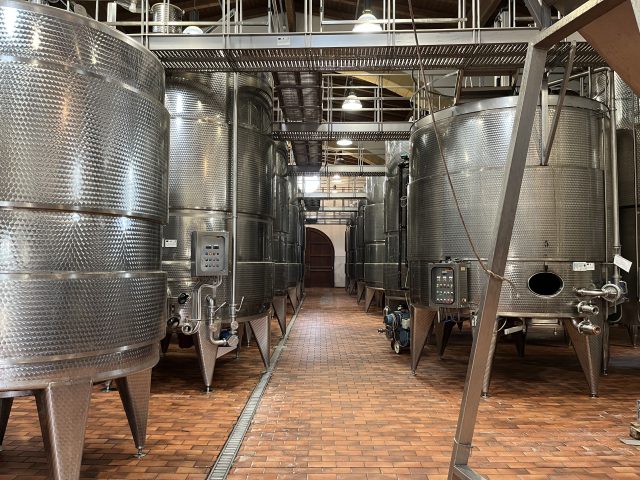
On the other end of the spectrum, a number of producers emphasised the importance of keeping alcohol levels low for the sake of appealing to consumers. A hot climate, perfect for rapid ripening, make this an obvious challenge.
Patrì’s range, including its bestselling Etna Bianco, has no wines above 13.5% alcohol. “People must be able to drink the wine, not just taste one glass,” explained winemaker Antonio Landolfi.
This notion of keeping alcohol levels lower to maintain drinkability was also echoed by Assuli Winery president Roberto Caruso, especially in relation to Assuli’s bestselling Fiordiligi (12.5% ABV Sicilia DOC, organic Grillo).
With the forthcoming changes to the UK alcohol duty system on 1 August, which will see wine taxed according to its strength, we could see a growing number of producers pushing lower-alcohol wines in order to make headway on the UK market.
Plus, given growing global consumer interest in moderation, particularly among younger drinkers, these slightly lower-ABV wines may well resonate.
Sparkling surge
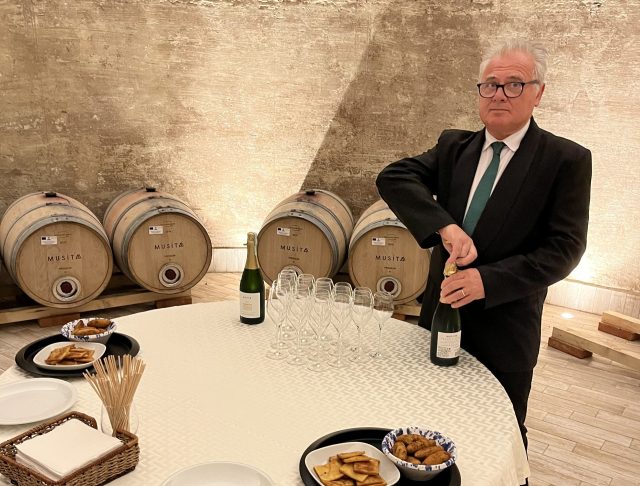
Sicily is probably not be the first Italian region that one thinks of when it comes to fizz, but there are a number of producers investing resources into the production of sparkling wines.
Cristo di Campobello released its first classic method sparkling in 2017, and now produces individual brut expressions made from 100% Grillo, Nero d’Avola (as a rosé), and Chardonnay.
The estate, 230-270 metres above sea level in Agrigento, is noted for its chalk soils, a feature of other regions known for sparkling wine production, such as Champagne and Sussex. Bonetta even went so far as to describe the chalk as Cisto di Campobello’s “power”. To conserve freshness, the grapes are harvested in early August.
Speaking about the Musita’s 100% Chardonnay classic method Passocalcara, consultant winemaker Ivan Cappello said: “Our aim was not to be Champagne, because we are not Champagne, but a very specific part of Italy.”
The suggested pairing with Passocalcara was also very particular to this corner of the world: panelle, or chickpea flour fritters, which have a slight greasiness that works very well with this blanc de blancs style.
Salemi’s unusually cool microclimate for Trapani is a consequence of sea breezes. This made it popular destination for 19th century nobles needing a break from the sloth of Palermo, and also makes it well-suited for the cultivation of the low sugar, high acid grapes desired for traditional method sparkling, though Musita currently only produces a modest 2,000 bottles a year of Passocalcara.
Sweet dreams
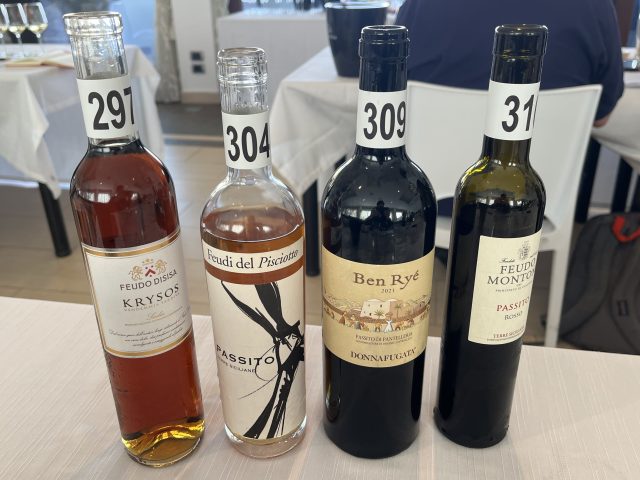
While fortification and noble rot are both employed by winemakers wishing to create wines with residual sugar, the method most synonymous with Sicilian sweet wine production is passito, which involves partial drying of the grapes before fermentation.
Donnafugata’s Passito di Pantelleria DOC Ben Ryé (which db attended a vertical tasting of last year) is widely upheld as one of the iconic wines of Sicily. A spokesperson for Donnafugata disclosed that, despite the struggles some sweet wines have on the market, “demand is very high” for Ben Ryé. The newly-released 2021 vintage promises to have the same ageing potential of previous years.
Zibibbo and Grillo are certainly popular passito options, but black varieties, including Nero d’Avola, Perricone, Nerello Mascelese and Nerello Cappuccio, also have potential
There are winemakers utilising international varieties for sweet styles too: Feudi del Pisciotto’s Passito Ferrè is a 50/50 blend of Sémillon and Gewurztraminer.
But, though there is clearly a market for sweet wines, as the success of Ben Ryé demonstrates, some producers are making adjustments with consumers in mind. Costante Planeta, Planeta’s area manger for Southern Italy, revealed that changes had been made with the most recent vintage of the brand’s Passito di Noto: “It’s not always easy to drink sweet wine, so this year we made an effort to lower the residual sugar to appeal to more markets.” The precise degree of change was not disclosed.
Tourism targets
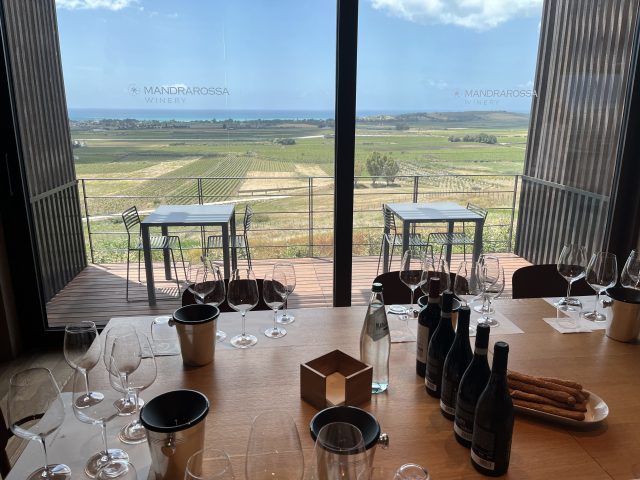
Already a popular tourist destination, Sicily has enjoyed further interest from travellers, both from elsewhere in Italy and abroad, thanks in no small measure to the second season of The White Lotus. Set in Taormina, on the east coast (though largely filmed in Cefalù, on the north), the HBO show has sold Sicilian sun and sea to its viewers.
According to data presented by Professor Roberta Garibaldi, president of the Italian Association of Food and Wine Tourism, Sicily ranks number one as an oenogastronomic for Italian tourists, with 35% putting the region as their first choice.
But Sicily’s wine industry still has some way to go when it comes to building its reputation among Italian tourists. A survey of tourists found that the three food and drink items most closely associated with Sicily are (in descending order): cannoli, arancini, and cassata (a cake layered with ricotta and fruit). By contrast, for Veneto, Marche, Molise, Abruzzo, Toscana and Piemonte, ‘wine’ does feature in the top three.
This could soon change, as many producers have amped up their offering to visitors with tastings and tours. Some have also invested in new wineries to cater to those seeking these experiences. Mandrarossa’s facility in Menfi was opened last June thanks to a €700,000 investment from parent-cooperative Cantine Settesoli, and further money from the European Union. With a tasting room and a small dining area both overlooking the indigo smudge Mediterranean Sea, it has clearly been designed with Instagram-snapping tourists in mind.
The next generation
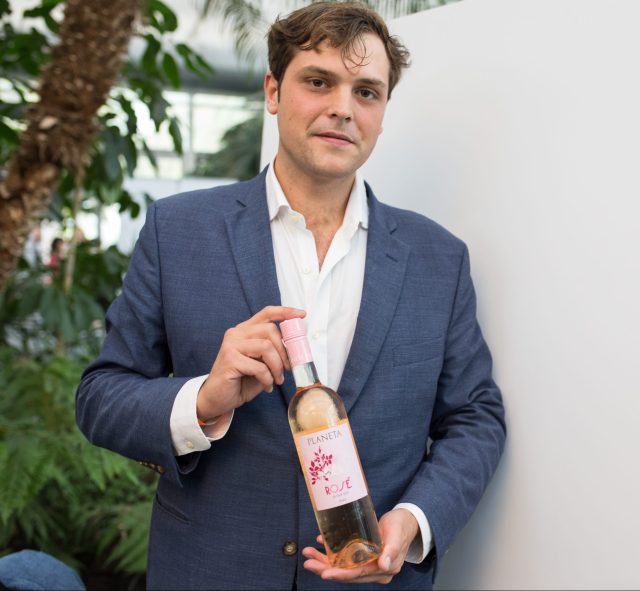
The seeds of future success have already been sown. One thing that became particularly clear when meeting producers at the En Primeur showcase, and during an earlier tour of part of the western end of island, was that there are a number of young people getting involved in the industry.
Many of these individuals are continuing their family’s work, taking the baton from their parents and grandparents. Through discussions with younger representatives of a number of companies, the two themes that consistently emerged were the importance of sustainability, so that they might pass on the business to their own children, and pride in their Sicilian identity.
This upcoming generation will be pivotal in determine the course of Sicilian wine for the decades to come. While it’s too early to predict specifics, especially given how much has changed in Sicily’s wine industry in the 21st century already, the future does indeed look bright.
At Sicilia En Primeur, db also spoke with Assovini Sicilia President Count Laurent Bernard de la Gatinais about the idea of Sicily as a “wine continent”.
Related news
Bottega celebrates Unesco recognition of Italian cuisine

